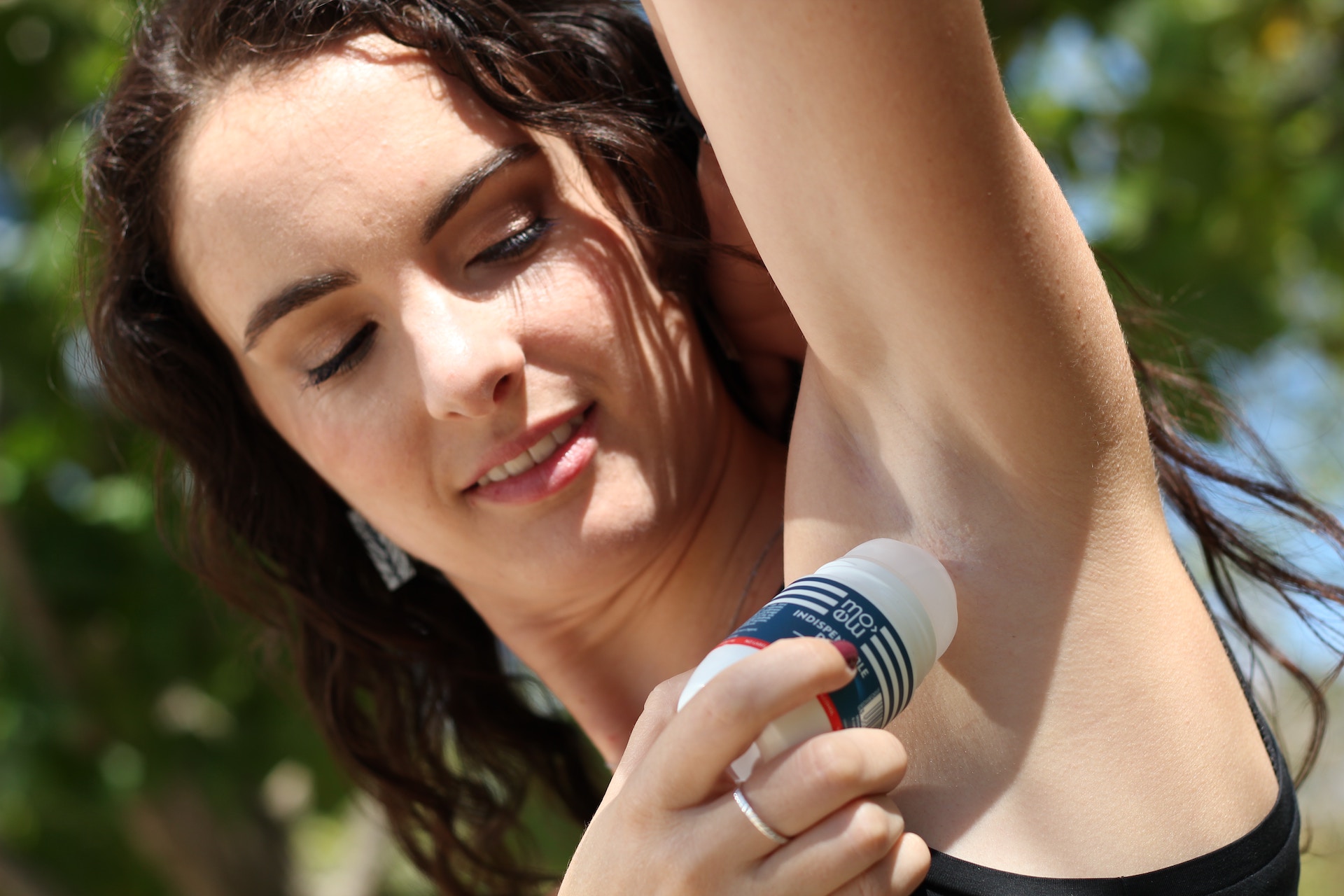If you’ve ever struggled with a stubborn dark spot or discolored skin, you know how difficult it can be to get rid of hyperpigmentation. Fine lines and wrinkles may give away your age, but discoloration can’t exactly hiding it either. After all, skin lacking a natural glow and tone looks aged and weathered. There are often few options when it comes to effective solutions for treating hard-to-remove hyperpigmentation that won’t dry, redden or irritate the skin.
For years, dermatologists relied on the skin-lightening effects of hydroquinone (and other ingredients). Many still prescribe it, but a more natural alternative is giving hydroquinone a run for its money. That’s where Cysteamine comes in, a proven skin lightener that improves discoloration across the board. From expert knowledge on how it works to how to use it and the best products with Cysteamine, here’s everything you need to know about the inconspicuous skin lightener.
What is Cysteamine?
Antioxidant-enriched Cysteamine is an amino acid derivative found naturally in the body that inhibits melanin production in the skin. In synthetic form, Cysteamine is a safer and more tolerable agent for treating hyperpigmentation and lightening discoloration compared to other ingredients and medications that have been the agents of choice for years.
Cysteamine was originally discovered in fish when scientists noticed a flash effect. Although board-certified dermatologist Corey L. Hartman, MD, says Cysteamine has always been around, it has only recently been incorporated into topical skin care products. “Its pungent, sulfur-like odor was unpleasant and difficult to tolerate, but eventually, scientists developed a mask that is absorbed after brief contact, so you don’t have to endure the smell on your skin for long (it dissipates when you wash it off your skin).”
More and more skincare brands are formulating creams and serums with Cysteamine. Now that the skin care industry has learned that topical application of Cysteamine doesn’t require a doctor’s prescription (as it used to), it’s becoming more popular. “It’s growing in popularity because it effectively mitigates stubborn hyperpigmentation while being a gentle alternative to harsher ingredients like hydroquinone,” says Rachel Roff, esthetician and founder of Urban Skin Rx.
New York City-based dermatologist Dendy Engelman, MD, says Cysteamine is generally well tolerated by various skin types, making it a popular alternative to harsher skin-lightening and brightening agents like hydroquinone. “Although cysteamine effectively reduces excess pigment in the skin from various types of hyperpigmentation, including postinflammatory hyperpigmentation (PIH), melasma, and lentigines – restoring hyperpigmented skin areas to their natural hue – it’s also known to fight free radical damage in the skin, which helps slow and prevent signs of premature aging,” she says.
How Cysteamine works
According to Roff, topical application of Cysteamine to the skin helps even discoloration by reducing the amount of L-cystine in the skin. “By lowering cystine levels, cysteamine decreases melanin synthesis, helping to combat dark spots and hyperpigmentation,” she explains.
The science behind Cysteamine and how it lightens unwanted discoloration is based on its functionality. “Cysteamine can do many things in the body’s cells, including reducing copper and iron ions, increasing glutathione, and controlling melanin-producing tyrosinase,” she explains. “These factors affect stubborn dark spots that form on the skin.”
But this is where Cysteamine differs from other skin lighteners. Most can only improve certain types of discoloration, but Dr. Hartman says Cysteamine works on all types of pigment-even stubborn, hormone-induced melasma-and on all skin tones and types, making it a universally acceptable anti-pigment treatment. “Cysteamine is even suitable for skin with slightly more melanin that is prone to hyperpigmentation and wants to bring its skin tone back to its base tone without making it any shades lighter,” he says.
Cysteamine vs. hydroquinone
Hydroquinone has been the most popular skin whitening agent for years, but that has changed with the introduction of Cysteamine. However, that doesn’t mean hydroquinone has no place in the dermatologist’s toolbox – because it does, albeit to a lesser extent.
While Dr. Hartman says he still prescribes it occasionally, he doesn’t have his patients use hydroquinone as much as they used to, and he doesn’t have them use it as long. “Some patients need hydroquinone, but mostly I prescribe Cysteamine first to patients with hyperpigmentation. If the pigment is resistant to other therapies or has tried Cysteamine or other pigment-reducing agents that don’t work, I give them hydroquinone,” he explains. “Years ago, I started patients on hydroquinone to lighten hyperpigmentation, which I don’t do anymore, but if necessary, I’ll switch to it.”
Patients have always been skeptical of hydroquinone use, partly because of its potential toxicity and the fact that it can only be used for a limited period. “Hydroquinone tends to cause a ‘halo effect’ around spots treated with it because it lightens all the skin it comes in contact with,” Dr. Engelman says. “And it’s unsuitable for pregnant or breastfeeding women or people with vitiligo.”
Although hydroquinone is stronger than Cysteamine and provides faster results, she adds that one of the biggest drawbacks is that it can irritate the skin and cause dryness and redness – so she doesn’t recommend it for people with dry or sensitive skin. “Cysteamine, available over the counter, is gentler on the skin and is usually well tolerated by most skin types, especially people with sensitive or dry skin who are looking for a gentle but effective solution to hyperpigmentation,” she explains. “Unlike hydroquinone, it also offers additional antioxidant benefits.” But it may be the right option for someone who wants to relieve hyperpigmentation faster and whose skin can tolerate hydroquinone.
Plus, hydroquinone is a bleaching agent, while Cysteamine isn’t. “Cysteamine is a true pigment corrector, so it evens out the skin tone and doesn’t just lighten the skin,” Dr. Hartman explains. He calls cysteamine “completely non-toxic” and says it also acts on various aspects of the melanin pathway, not just hydroquinone. However, for Cysteamine to be effective, Dr. Hartman says it must be formulated at a concentration of at least five percent, which is the industry standard. “The only product I know of with a higher concentration than five percent is the new version of Cyspera, which contains seven percent cysteamine.”
How to use Cysteamine
Cysteamine isn’t an ingredient you can simply apply and leave on your skin all day. Instead, it comes with special instructions, so you’ll need to take time each day to apply it properly. You can use Cysteamine in the morning or at night, but it’s most effective when applied to unwashed skin (yes, even dirty and makeup-laden skin). “If there is a little oil on the skin, cysteamine is less likely to be irritating,” Dr. Hartman adds.
After applying a cream or serum with Cysteamine, such as Urban Skin Rx’s Hypercorrect Intense Fading Cream or Senté Cysteamine HSA, leave it on for 15 minutes before washing it off. Then continue with your normal skincare routine. “You can also leave Cysteamine on for less than 15 minutes or dilute the strength by mixing it with a moisturizer if needed,” Roff says.
The face isn’t the only area where hard-to-remove discoloration settles. According to Roff, Cysteamine can be used on other body parts and lips. However, if you use it to lighten dark spots on the lips, she advises leaving it on for no more than five minutes in the first few weeks to ensure you don’t irritate the skin.
Typically, Cysteamine doesn’t interfere with or counteract other skincare ingredients, including exfoliating acids and high-potency actives. However, Roff advises caution and to use other active ingredients, such as retinol and exfoliants, only in the first few weeks. “Stick to moisturizers and, of course, sunscreens. Then, once your skin has become accustomed to the newly introduced Cysteamine, you can slowly reintroduce other active ingredients into your skincare routine. If your skin seems irritated for any reason while using Cysteamine, Roff advises giving your skin a break for a few days and then starting again.
When you’ll see results
Cysteamine evens out overall skin tone but has no lightning effect. “The improvement isn’t super fast, but it evens out the skin, and I think that’s a more desirable result than just lightening the skin,” Dr. Hartman says. “The goal is to have a more even skin tone because people with hyperpigmentation usually don’t want to fade or lighten their skin, but rather even it out.”
Dr. Engleman says that with consistent use, Cysteamine fades hyperpigmentation over several weeks: “Many patients notice a difference in about six to eight weeks, with optimal results after about 12 to 16 weeks.” However, stubborn dark spots that have been present for a long time take longer to fade. However, once you see improvement, you can reduce treatment with Cysteamine twice a week to maintain results.
Of course, combining Cysteamine with in-office skin whitening treatment can enhance results. Dr. Hartman likes to use Cysteamine in conjunction with picosecond lasers, which break up pigment, as well as fractional surface lasers or micro-needling, which are also helpful in removing discoloration. “Any time you combine a pigment-reducing agent with a professional treatment, the results are always better than with the agent alone,” he says.







